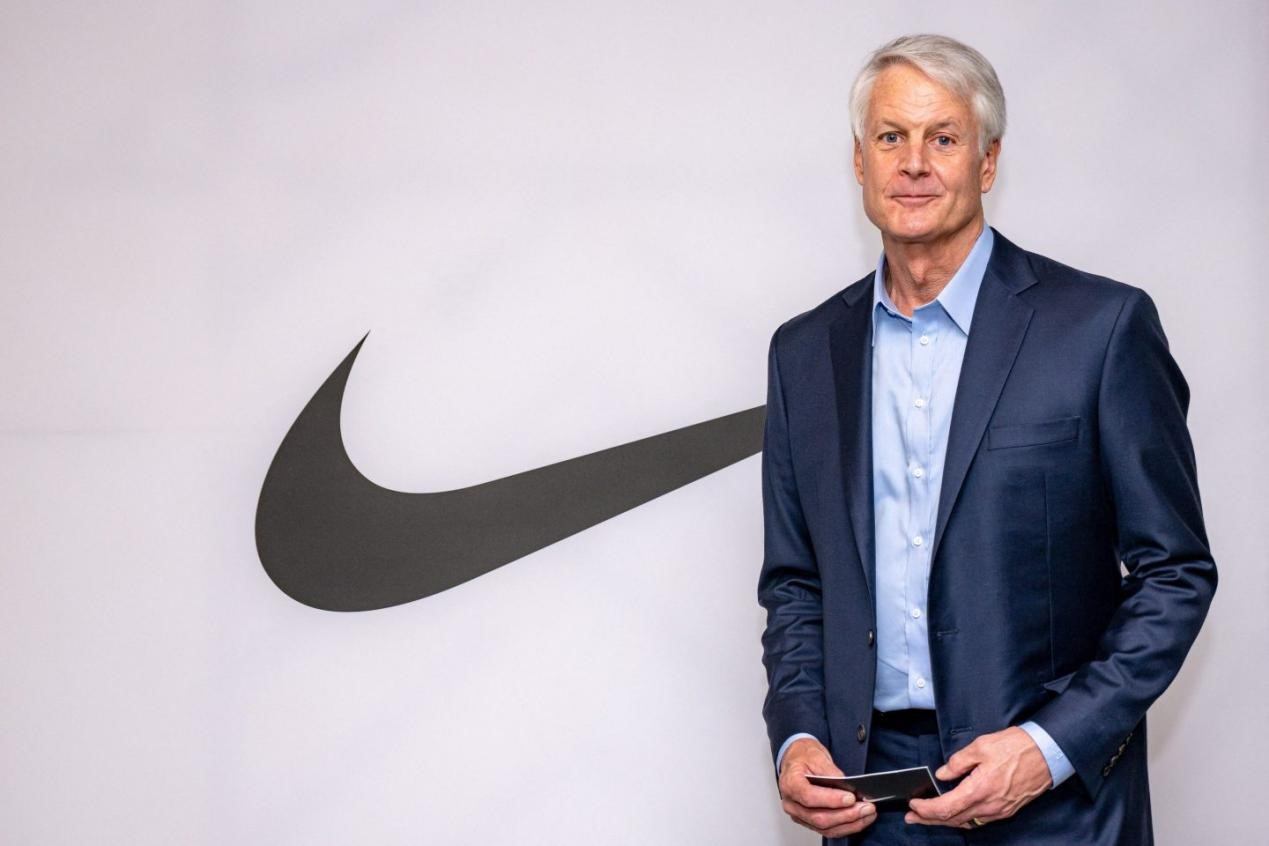
为了从低迷的销售额中恢复,与新一波运动鞋品牌竞争,鞋业巨头耐克将裁员2%,这也是公司三年降本计划的一部分。然而耐克裁员后才发现,有些员工的作用不可替代。
耐克将返聘一位曾从业30年已退休的资深高管协助公司重振业务。由于耐克与鞋品销售商关系出现问题,2020年退休的前高管汤姆·佩迪将出任市场合作伙伴副总裁。佩迪曾负责全球销售业务,后来担任耐克新兴市场总经理并负责北美地区。
耐克在一份声明中告诉《财富》杂志:“佩迪是经验丰富的领导者,从业记录良好,在打造高绩效团队方面也经验丰富,他回到耐克我们都很高兴。”
近来,因精准迎合了疫情期间跑者的需求,Hoka和昂跑等新兴运动鞋品牌销售飙升,让耐克很是头疼。耐克不仅在提供创新产品吸引Z世代消费者方面动作迟缓,与零售商关系也岌岌可危,主要原因是耐克大笔投入“直面消费者”战略,最终影响了公司。
尽管耐克尽最大努力重组领导层,重新聚焦营销,为节约成本收紧了供应,但目前为止没收获有意义的成果。上个月的财报显示,四季度公司收入同比下降2%至126亿美元,预计2025年销售额将下降5%到9%。尽管分析师预计销售额将增长1%,然而耐克预测仅一季度销售额就将下降10%。
6月电话财报会议之后,耐克经历了有史以来最糟糕的一天,当天市值缩水达280亿美元。
零售遭受重创
耐克之所以举步维艰,很大程度上是因为该公司一度判断数字平台可以推动销售额增长50%,急速推进数字化转型。2017年,耐克开始投资DTC战略,切断了与零售商Big 5 Sporting Goods、Dunham’s Sports、Urban Outfitters、Dillard’s和Zappos合作。
美国零售投资研究公司 Jane Hali&Associate的高级研究分析师杰西卡·拉米雷斯告诉《财富》杂志,耐克的转型有逻辑依据。因为耐克向来非常了解消费者的兴趣方向,而且运动鞋爱好者强烈支持。
“拥有强大直接面向消费者渠道非常棒,因为可以跟消费者建立联系了解需求,还可以直接获得消费者数据,”拉米雷斯说,“真正了解客户,一直是耐克的优势所在。
刚开始耐克转型相当成功。耐克报告称,2022年四季度DTC收入增长14%达到187亿美元。然而疫情期间,随着跑步变成流行且成本不高的爱好,Hoka、昂跑和布鲁克斯等品牌因吸引到大量休闲跑者和初学者越发受欢迎。
“耐克一直以创新和技术闻名,但主要针对马拉松跑者,也就是精英跑者,”拉米雷斯说,“耐克从不关注日常跑步健身的人群。”
到2022年4月,耐克意识到DTC战略的局限性。Native 和 Quip 等 DTC 公司纷纷寻找零售合作伙伴合作以减轻运输和数字创新等电商相关压力,这也是行业大趋势。
“耐克以为可以独立完成很多事,但实际上并没有那么简单,”去年夏天Williams Trading股票分析师萨姆·波瑟告诉《华尔街日报》(Wall Street Journal)。
此后,耐克一直努力修复与零售商的关系。去年6月,Designer Brands和梅西百货(Macy’s)宣布开始销售耐克产品。2022年由于Footlocker获取耐克产品的渠道受限,销售额暴跌,2023年2月Footlocker开始大量销售耐克标志的篮球鞋和运动鞋。
除了加强与零售合作伙伴的关系,耐克还努力争取价格敏感的消费者。上周,耐克推出了一系列相对实惠,价格不到100美元的鞋款,吸引因其价格高昂望而却步的顾客。但首席财务官马修·弗兰德承认,增加销售额将是艰苦的战斗。
“未来几个季度是大挑战,”他在公司电话财报会议上表示。(财富中文网)
译者:梁宇
审校:夏林
为了从低迷的销售额中恢复,与新一波运动鞋品牌竞争,鞋业巨头耐克将裁员2%,这也是公司三年降本计划的一部分。然而耐克裁员后才发现,有些员工的作用不可替代。
耐克将返聘一位曾从业30年已退休的资深高管协助公司重振业务。由于耐克与鞋品销售商关系出现问题,2020年退休的前高管汤姆·佩迪将出任市场合作伙伴副总裁。佩迪曾负责全球销售业务,后来担任耐克新兴市场总经理并负责北美地区。
耐克在一份声明中告诉《财富》杂志:“佩迪是经验丰富的领导者,从业记录良好,在打造高绩效团队方面也经验丰富,他回到耐克我们都很高兴。”
近来,因精准迎合了疫情期间跑者的需求,Hoka和昂跑等新兴运动鞋品牌销售飙升,让耐克很是头疼。耐克不仅在提供创新产品吸引Z世代消费者方面动作迟缓,与零售商关系也岌岌可危,主要原因是耐克大笔投入“直面消费者”战略,最终影响了公司。
尽管耐克尽最大努力重组领导层,重新聚焦营销,为节约成本收紧了供应,但目前为止没收获有意义的成果。上个月的财报显示,四季度公司收入同比下降2%至126亿美元,预计2025年销售额将下降5%到9%。尽管分析师预计销售额将增长1%,然而耐克预测仅一季度销售额就将下降10%。
6月电话财报会议之后,耐克经历了有史以来最糟糕的一天,当天市值缩水达280亿美元。
零售遭受重创
耐克之所以举步维艰,很大程度上是因为该公司一度判断数字平台可以推动销售额增长50%,急速推进数字化转型。2017年,耐克开始投资DTC战略,切断了与零售商Big 5 Sporting Goods、Dunham’s Sports、Urban Outfitters、Dillard’s和Zappos合作。
美国零售投资研究公司 Jane Hali&Associate的高级研究分析师杰西卡·拉米雷斯告诉《财富》杂志,耐克的转型有逻辑依据。因为耐克向来非常了解消费者的兴趣方向,而且运动鞋爱好者强烈支持。
“拥有强大直接面向消费者渠道非常棒,因为可以跟消费者建立联系了解需求,还可以直接获得消费者数据,”拉米雷斯说,“真正了解客户,一直是耐克的优势所在。
刚开始耐克转型相当成功。耐克报告称,2022年四季度DTC收入增长14%达到187亿美元。然而疫情期间,随着跑步变成流行且成本不高的爱好,Hoka、昂跑和布鲁克斯等品牌因吸引到大量休闲跑者和初学者越发受欢迎。
“耐克一直以创新和技术闻名,但主要针对马拉松跑者,也就是精英跑者,”拉米雷斯说,“耐克从不关注日常跑步健身的人群。”
到2022年4月,耐克意识到DTC战略的局限性。Native 和 Quip 等 DTC 公司纷纷寻找零售合作伙伴合作以减轻运输和数字创新等电商相关压力,这也是行业大趋势。
“耐克以为可以独立完成很多事,但实际上并没有那么简单,”去年夏天Williams Trading股票分析师萨姆·波瑟告诉《华尔街日报》(Wall Street Journal)。
此后,耐克一直努力修复与零售商的关系。去年6月,Designer Brands和梅西百货(Macy’s)宣布开始销售耐克产品。2022年由于Footlocker获取耐克产品的渠道受限,销售额暴跌,2023年2月Footlocker开始大量销售耐克标志的篮球鞋和运动鞋。
除了加强与零售合作伙伴的关系,耐克还努力争取价格敏感的消费者。上周,耐克推出了一系列相对实惠,价格不到100美元的鞋款,吸引因其价格高昂望而却步的顾客。但首席财务官马修·弗兰德承认,增加销售额将是艰苦的战斗。
“未来几个季度是大挑战,”他在公司电话财报会议上表示。(财富中文网)
译者:梁宇
审校:夏林
Nike CEO John Donahoe in 2023.
PHOTO BY JONAS ROOSENS/BELGA/AFP VIA GETTY IMAGE
As part of Nike’s three-year cost-saving plan to bring it back from slumping sales and compete with a new wave of sneaker brands, the shoe giant is in the process of laying off up to 2% of its staff. But even as the company splits with those employees, it has found that some personnel are irreplaceable.
Nike is bringing a 30-year veteran executive from the company out of retirement to help in its recovery efforts. Former senior executive Tom Peddie, who retired from the shoe giant in 2020, will take on the role of vice president of marketplace partners after Nike’s relationships with shoe sellers have faltered. Peddie previously led global sales at Nike’s before becoming the company’s general manager of emerging markets and heading its North American geography.
“[Peddie] is a seasoned leader with a proven business track record and experience building high-performing teams,” Nike told Fortune in a statement. “We are excited to have him return to Nike.”
Nike has been confounded by competition from a new guard of sneaker brands like Hoka and On that soared during the pandemic by catering to casual runners. Beyond failing to offer innovative products to attract Gen Z shoppers, Nike has also struggled to maintain relationships with retailers as it invested heavily in a direct-to-consumer strategy that ultimately hurt the company.
Despite Nike’s best efforts to restructure leadership, refocus marketing efforts, and tighten supply as part of its cost-saving plan, it has yet to see meaningful positive results. The company reported last month a 2% decrease in fourth-quarter revenue to $12.6 billion and is expected to see 2025 sales fall by mid-single digits. Despite analysts expecting a 1% increase in sales, the company instead predicts a 10% dip in first-quarter sales alone.
The company had its worst day in its history following the June earnings call, losing $28 million in market capitalization in a single trading day.
Retail whiplash
Nike has struggled in large part because of its rapid pivot to a digital platform, which the company at one point believed could drive 50% of sales. In 2017, the company began its investment in its DTC strategy and then cut ties with retailers Big 5 Sporting Goods, Dunham’s Sports, Urban Outfitters, Dillard’s, and Zappos.
This pivot was rooted in logic, Jessica Ramírez, senior research analyst at Jane Hali & Associate, told Fortune. Nike has had a history of understanding where consumers’ interests lie and had strong allegiance from its sneakerhead audiences.
“There is a beauty in having a strong direct-to-consumer channel because you’re able to connect with consumers on what they want. You’re able to have data from them,” Ramírez said. “And that’s where Nike always excelled, in really understanding their customer.”
The company’s efforts were initially a success, with Nike reporting a 14% increase to $18.7 billion in DTC revenue in 2022’s fourth quarter. But over the course of the pandemic, as running became a popular and affordable hobby, brands like Hoka, On, and Brooks grew in popularity due to its appeal to casual and beginner runners.
“Nike was always known for having the innovation and the technology, but it was for the runner that does a marathon—the very elite runner,” Ramírez said. “And they never looked at the everyday runner. “
By April 2022, the company recognized the limitations of its DTC strategy, part of a broader trend of DTC companies such as Native and Quip seeking out retail partners to relieve the pressure of responsibilities associated with e-commerce, such as shipping and digital innovation.
“Nike thought they could do a lot of it themselves, but they aren’t as capable as they thought they were,” Sam Poser, equities analyst at Williams Trading, told the Wall Street Journal last summer.
The shoe giant has since tried to mend its relationship with retailers. Last June, Designer Brands and Macy’s announced they would start selling Nike products. After Footlocker’s sales tanked in 2022 in part because of its limited access to Nike inventory, it began selling basketball shoes and sneakers adorned with the brand’s famous swoop in greater abundance in February 2023.
Along with strengthening ties to retail partners, Nike is also trying to win over price-sensitive shoppers. Last week it launched a line of shoes for $100 and under—relatively affordable in the market—in order to lure back customers put off by its hefty price tags. But CFO Matthew Friend conceded that increasing sales will be an uphill battle.
“It’s going to be challenging over the next couple of quarters,” he said in the company’s earnings call.






